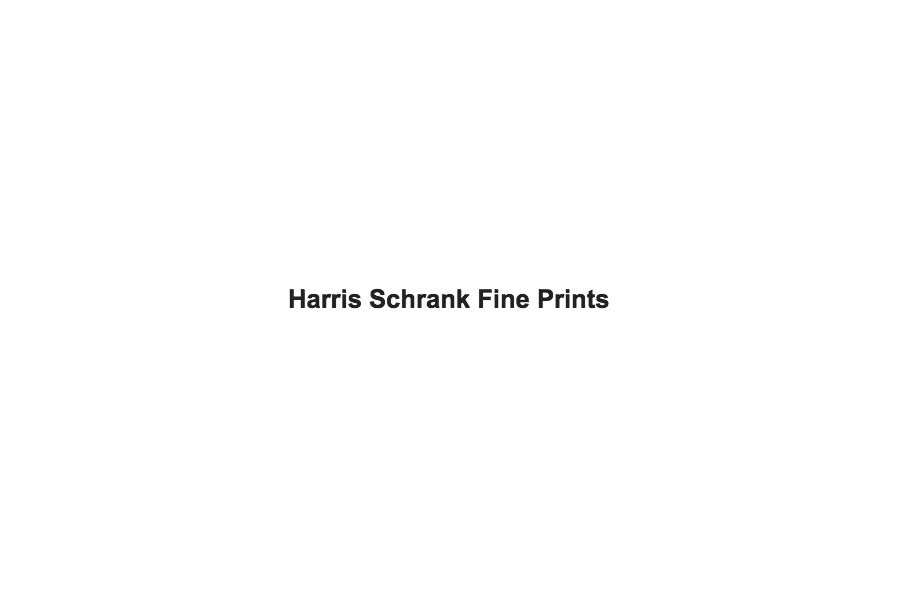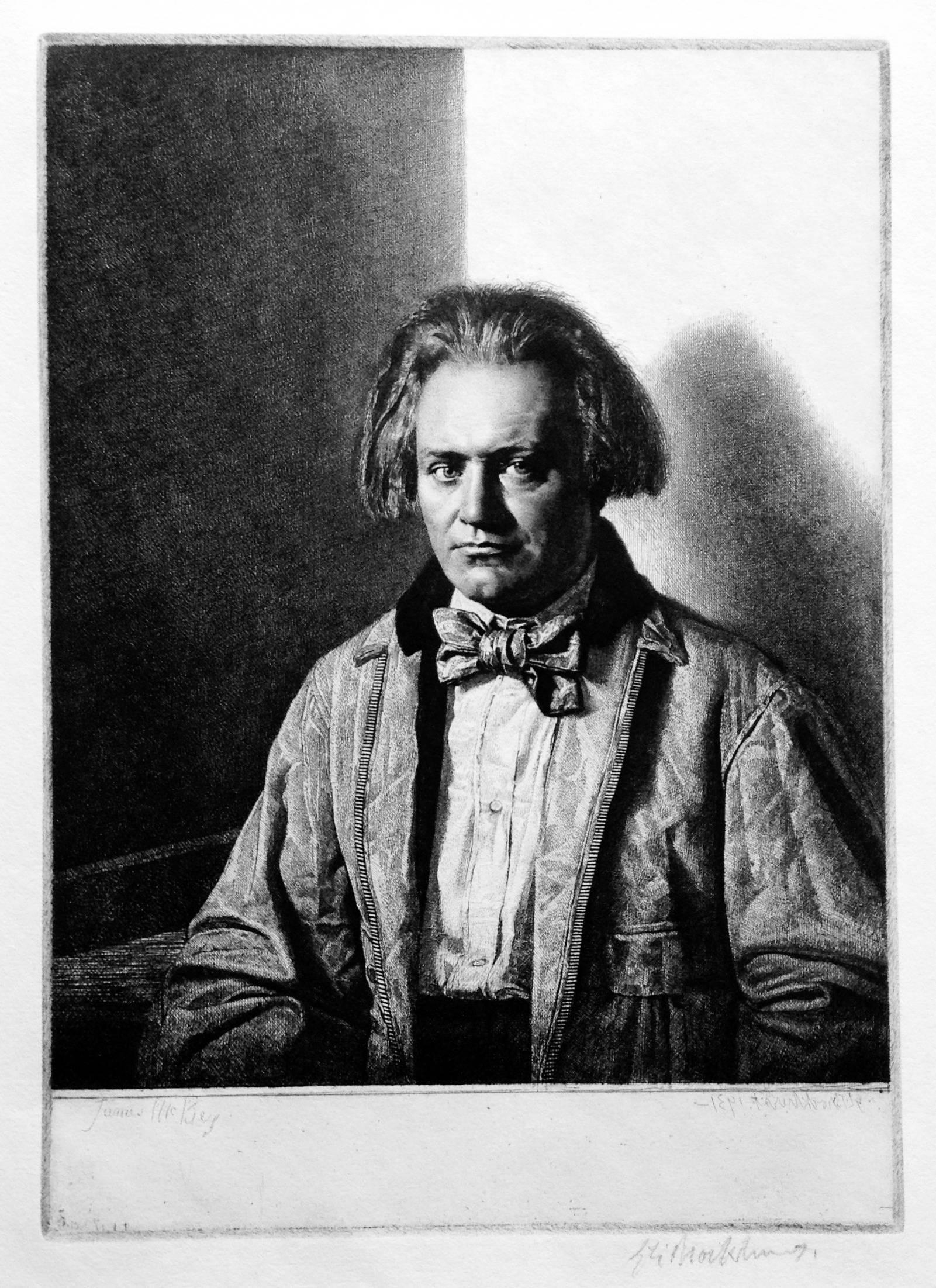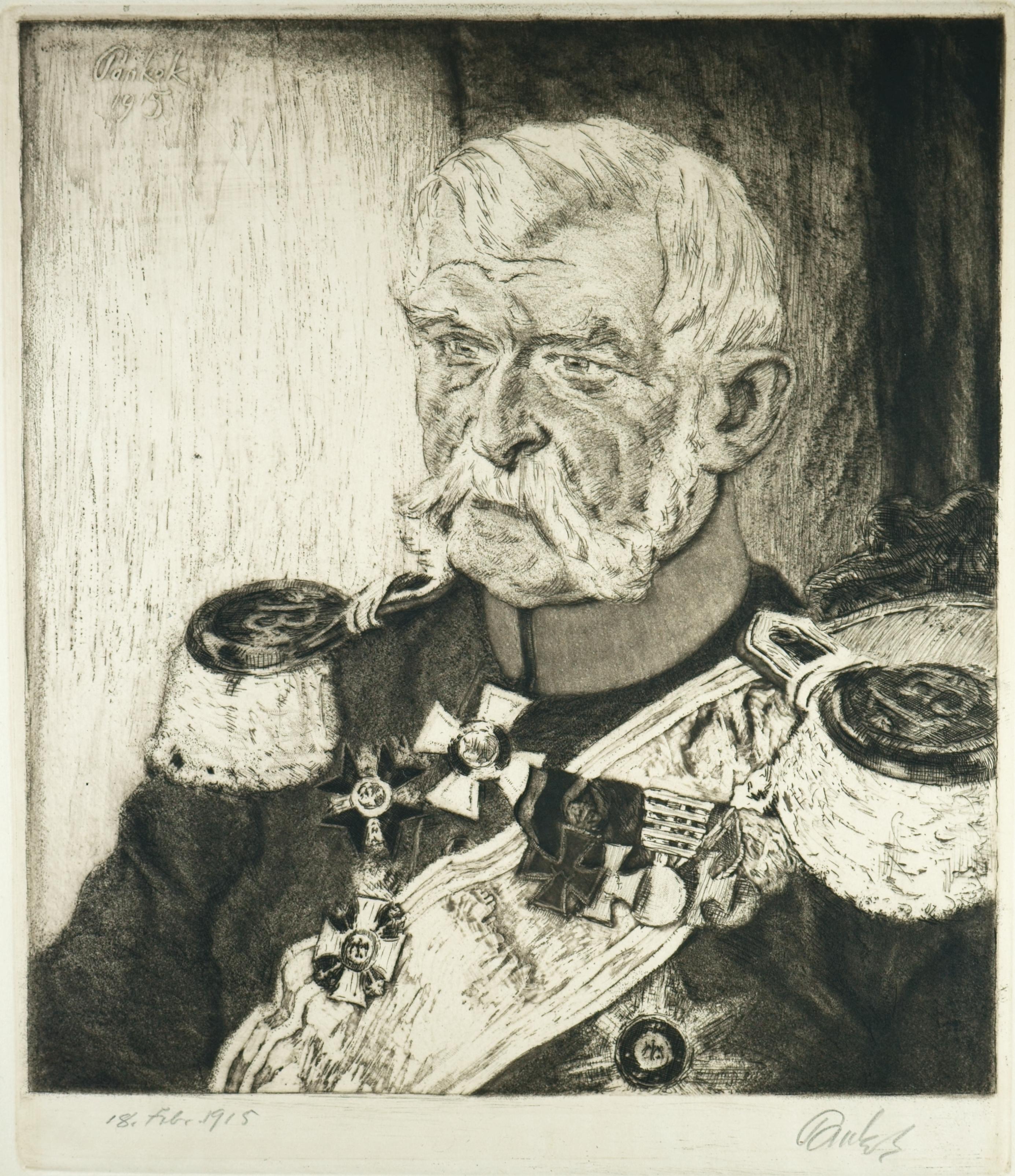Items Similar to A Galway Peasant (also, An Irish Peasant)
Want more images or videos?
Request additional images or videos from the seller
1 of 5
Gerald Leslie BrockhurstA Galway Peasant (also, An Irish Peasant)1920
1920
About the Item
Gerald Brockhurst (1890-1978), A Galway Peasant (also, An Irish Peasant), etching, 1920, signed in pencil lower right. Reference: Fletcher 10, from the edition of 55, third state (of 3), printed on laid paper, the full sheet, in very good condition (remains of prior hinging verso), 4 x 4 1/4, the sheet 10 1/2 x 9 inches, window mount.
A fine impression, printed in greyish/black ink on ivory laid paper.
Brockhurst was one of the outstanding British artists of the early 20th Century, hugely popular in the ’20’s and early ’30’s. Today he is still renowned for his poignant images of young women and girls (including the famed Adolescence) and several portraits of contemporaries (Rushbury, McBey); to print lovers portraits such as this example show him at his best: a master etcher, and superb draftsman.
- Creator:Gerald Leslie Brockhurst (1890 - 1978, English)
- Creation Year:1920
- Medium:
- Movement & Style:
- Period:
- Condition:
- Gallery Location:New York, NY
- Reference Number:1stDibs: LU51531461943
Gerald Leslie Brockhurst
(b Birmingham, 31 Oct. 1890; d Franklin Lakes, NJ, 4 May 1978). British-born painter and etcher who became an American citizen in 1949. Precociously gifted, an excellent draughtsman, and a fine craftsman, Brockhurst won several prizes at the Royal Academy Schools and went on to have a highly successful career as a society portraitist, first in Britain and then in the USA, where he settled in 1939, working in New York and New Jersey. He is best known for his portraits of glamorous women, painted in an eye-catching, dramatically lit, formally posed style similar to that later associated with Annigoni. As an etcher Brockhurst is remembered particularly for Adolescence (1932), a powerful study of a naked girl on the verge of womanhood staring broodingly into a mirror—one of the masterpieces of 20th-century printmaking.

About the Seller
4.9
Recognized Seller
These prestigious sellers are industry leaders and represent the highest echelon for item quality and design.
Established in 2000
1stDibs seller since 2016
100 sales on 1stDibs
Typical response time: 3 hours
Associations
International Fine Print Dealers Association
- ShippingRetrieving quote...Ships From: New York, NY
- Return PolicyA return for this item may be initiated within 7 days of delivery.
More From This SellerView All
- Portrait of SlevogtBy Emil OrlikLocated in New York, NYEmil Orlik (1870-1932), Portrait of Slevogt, etching, 1921, signed in pencil and numbered (27/100) [also signed and dated in the plate], from the presumed edition of 100. In very goo...Category
1920s Realist Portrait Prints
MaterialsEtching
- Una (Portrait of a Creole Lady)By Gerald Leslie BrockhurstLocated in New York, NYGerald Leslie Brockhurst (1891-1978), Una (Portrait of a Creole Lady), etching, 1929, signed in pencil lower right, and also inscribed by the artist: “2nd State, GB”. Reference: Flet...Category
1920s Realist Portrait Prints
MaterialsEtching
- James McBeyBy Gerald Leslie BrockhurstLocated in New York, NYGerald Leslie Brockhurst (1890-1978), James McBey, etching, 1931, signed in pencil lower right [also signed in the plate, in reverse, lower right just under the borderline, and title...Category
1930s Realist Portrait Prints
MaterialsEtching
- Dup...By Honoré DaumierLocated in New York, NYHonore Daumier (1808-1879), “Dup…”, lithograph, 1832, from the series Celebrites de la Caricature, plate 171. Reference: Delteil 45, Daumier Register 45, only state. In generally goo...Category
1830s Realist Portrait Prints
MaterialsLithograph
- SimilitudesBy Jean-Louis ForainLocated in New York, NYJean- Louis Forain (1852-1931), Similitudes, etching and drypoint, not signed [signed in the plate upper right], 1880, from the total edition of 545, on wove paper, in generally good...Category
1880s Realist Portrait Prints
MaterialsDrypoint
- Whistler Portrait No. 7 (Six Faces of Whistler)By Mortimer MenpesLocated in New York, NYMortimer Menpes (1855-1938), Whistler Portrait No. 7 (Six Faces of Whistler), drypoint, 1902-3, signed in pencil and inscribed “imp” bottom right margin. Reference: Morgan 237. Water...Category
Early 1900s Realist Portrait Prints
MaterialsDrypoint
You May Also Like
- Self Portrait With a Cat - Original etchingBy Léonard Tsuguharu FoujitaLocated in Paris, FRLeonard Tsuguharu FOUJITA Self portrait with a cat Original drypoint etching Printed signature in the plate On vellum 65 x 50 cm (c. 26 x 20in) Rare proof on Japan paper applied on vellum Posthumous edition by Chalcographie du Louvre...Category
Late 20th Century Realist Portrait Prints
MaterialsEtching
- General Wilhelm von Blume - Visionary retrospective -Located in Berlin, DEBernhard Pankok (1872 Münster - 1943 Baierbrunn), General Wilhelm von Blume, 1915, aquatint etching, 34 x 29.5 cm (sheet size), 26 x 22 cm (plate size), signed in the plate at upper left, in pencil at lower right and dated in pencil at lower left. - At lower left old collection stamp, at the right broad margin with a small spot, otherwise very good condition. About the artwork The 1915 aquatint etching of General Wilhelm von Blume is based on a 1912 oil painting in the LWL-Museum für Kunst und Kultur in Münster. A second oil portrait of the general by Pankok is in the Staatsgalerie Stuttgart. When Pankok painted the first oil portrait in 1912, the general had already been retired for 16 years. It is therefore a retrospective portrait. Accordingly, the orientation of his head is such that he is looking back in both the oil painting and the etching. Without fixing on anything in particular, he looks thoughtfully inwards and reflects on his life. Uniformed and highly endowed, it is his military activities in particular that he is reviewing attentively and, as his gaze reveals, quite critically. Pankok has literally written the sum of his experiences on Wilhelm von Blume's face: The physiognomy is a veritable landscape of folds, furrows, ridges and gullies, all the more striking against the flat background. It is clear that each of the medals was also won through suffering. However, by breaking the boundaries of the picture, his bust appears as an unshakable massif, which gives the general a stoic quality. The fact that the design of the portrait was important to Pankok can be seen from the different versions, the present sheet being the third and probably final revision, which Pankok dates precisely to 18 February 1915. Compared with the previous state, the light background now has a dark area against which the sitter's face stands out, the dark background in turn combining with the uniform to create a new tension in the picture. Pankok's taking up of the portrait of the high-ranking military veteran and its graphic reproduction can also be seen in relation to the First World War, which had broken out in the meantime. In the face of modern weapons of mass destruction, Wilhelm von Blume's warfare and military writings were relics of a bygone, more value-oriented era. About the artist After studying at the Düsseldorf Art Academy from 1889 to 1891 under Heinrich Lauenstein, Adolf Schill, Hugo Crola, and Peter Janssen the Elder, Bernhard Pankok went to Munich in 1892, where he worked primarily as a graphic artist for the two major Jugendstil magazines "Pan" and "Jugend," which established his artistic success. Through this work he met Emil Orlik, with whom he had a lifelong friendship. In 1897, he exhibited his first furniture, and in 1898, together with Richard Riemerschmid, Bruno Paul and Hermann Obrist...Category
1910s Realist Portrait Prints
MaterialsEtching
- Balaclava - The target in sight -Located in Berlin, DEHeinrich Haberl (1869 Passau to 1934 Munich), Sturmhaube, c. 1900. drypoint, 14 x 10 cm (platemark), 28 x 21 cm (sheet size), 39 x 29 cm (passe-partout), titled "Sturmhaube" in lead at lower left and inscribed "Kaltnadelradierung", signed and locally inscribed "Heinrich Haberl Mchn. [Munich]" at lower right, inscribed again in lead on verso and with old collection stamp. - slightly darkened, fixed and mounted - The target in sight - About the artwork The theatrical "role-portrait" is to be seen against the background of the Rembrandt cult, which reached its climax at the end of the 19th century. The soldier seems to have stepped straight out of Rembrandt's Night Watch (1642) to fix something outside the picture with an alert and ready gaze. The steeply rising brim of the morion frames the gaze and thus perspectivises it as the actual 'pictorial action'. The gaze represents both the vigilant defence and the visionary goal of the battle. Not only the subject, but also the style of the etching needle reflect Rembrandt's understanding of the times. Strong contrasts of light and dark are created in a virtuoso free stroke, without losing the effect of the reflections on the helmet and in the eyes. This shows a kinship with the early prints of Lovis Corinth, who also saw himself as an artist in the role of the knight. Against this background, Haberl's picture can also be seen as a representation of his artistic self-image. About the artist Heinrich Haberl first attended the art school in Nuremberg and from 1892 studied at the Munich Academy. There he was a master student of Johann Leonhard von Raab, Rudolf von Seitz, Franz von Defregger...Category
Early 19th Century Realist Figurative Prints
MaterialsEtching
- Renée Mauperin; Ten Etchings, Complete Set for novel by Goncourt BrothersBy James Jacques Joseph TissotLocated in Middletown, NYRenée Mauperin; Ten Etchings, Complete Set for the Illustrations to the Novel by Edmond and Jules de Goncourt 1882 Paris: G. Charpentier et Cie, 1882-1884. The complete set of ten ...Category
Late 19th Century Realist Interior Prints
MaterialsEtching
- Jim Dine Rimbaud, the Coffee Exporter poet portrait drawing in earth tone sepiaBy Jim DineLocated in New York, NYJim Dine has expertly sketched the accomplished French poet and coffee trader Arthur Rimbaud. A vignette of dark brown surrounds his thin, fine features, which are defined with a flu...Category
1970s Realist Portrait Prints
MaterialsEtching
- The Fortune Teller - Original woodcut (Buisson #60.109)By Léonard Tsuguharu FoujitaLocated in Paris, FRLeonard Tsuguharu FOUJITA The Fortune Teller, 1960 Original woodcut Signature printed in the plate On vellum 37 x 28 cm (c. 15 x 11 in) REFERENCES : Catalogue Raisonne Sylvie Buiss...Category
1960s Realist Portrait Prints
MaterialsEtching
Recently Viewed
View AllMore Ways To Browse
1920 S Portraits
1890s Contemporary
Etchings Black Women
Etching Lovers
Peasant Girl
Etched Ivory
Galway Ireland
Picasso Imaginary Portraits
American Sporting Art Etchings
Marilyn Rosenthal
Three Stooges
Vanity Fair Spy Prints
Picasso Le Gout
Brock And Co
Robin Morris On Sale
Warhol Reigning Queens
Andy Warhol Joseph Beuys
Le Gout Du Bonheur



